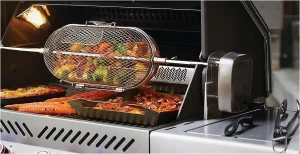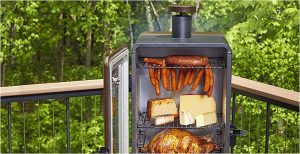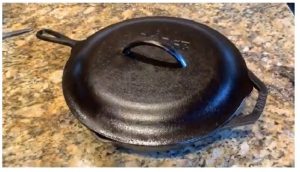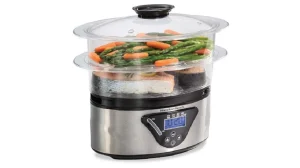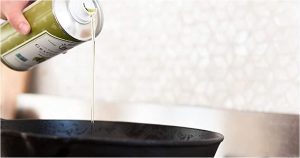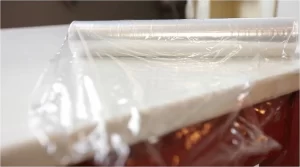Slow Juicer Vs. Cold Press: Choose the Right
Note: This article may contain affiliate links, which means if you make a purchase following our links won’t cost you extra, but we may earn a commission. Learn more
If you’re in the market for a new juicer, the debate between slow juicers and cold press models can seem confusing. This guide will help clarify the differences and guide you in making the best choice for your needs.
Slow juicers and cold press juicers are often used interchangeably, yet they highlight two unique methods of extracting juice. Slow juicers, commonly known as masticating juicers, operate by grinding and pressing the produce to extract the juice. This method ensures minimal oxidation and heat generation, retaining more nutrients and enzymes in the juice.
Cold press juicers employ a hydraulic press to extract juice, applying even pressure to get the most out of fruits and vegetables. The process results in rich, dense, and nutritious juice.
When contrasting slow juicing vs. cold press, the former is versatile and often capable of processing a broader range of produce, from leafy greens to nuts. In the debate of masticating vs. centrifugal juicer vs. cold press, it’s noteworthy that centrifugal juicers generate heat, which might degrade the nutritional value. This makes masticating and cold press juicers superior for those keen on maximum nutrition.
If you’re looking to experiment with various beverages, some slow juicer cold press recipes offer unique blends, maximizing flavor and health benefits. Your choice ultimately depends on your preferences, budget, and juicing goals. Evaluate the features and benefits of each type and choose one that aligns best with your lifestyle.
Related: Top 5 Slow Juicer Machine
slow juicer vs cold press: The Key Features Comparison
Operation Mechanism
Slow Juicers: Often known as masticating juicers, slow juicers utilize a grinding and pressing mechanism. The auger inside the machine rotates slowly to crush the fruits or vegetables against a hard surface, effectively squeezing out the juice.
Cold Press Juicers: These juicers employ a hydraulic press mechanism. The fruits and vegetables are placed between two plates, which then come together, exerting pressure to extract the juice.
Nutrient Retention
Slow Juicers: Due to their slow grinding action, there’s minimal heat generated. This ensures that enzymes and nutrients remain intact, offering healthier juice.
Cold Press Juicers: The pressing action also creates minimal friction and heat. Consequently, the juice produced retains most of its nutritional content.
Versatility
Slow Juicers: Masticating juicers are highly versatile. They can handle a wide range of produce, including leafy greens, hard fruits, and even nuts in some cases.
Cold Press Juicers: They are mainly designed for juicing and may not be as versatile as masticating juicers. Nonetheless, they deliver exceptional yield and quality from most produce.
Yield and Pulp
Slow Juicers: Generally, they produce a higher yield with a drier pulp. The juice is also less frothy and more consistent in texture.
Cold Press Juicers: Known for maximizing the juice yield, they extract nearly every drop, leaving behind an exceptionally dry pulp.
Noise Levels
Slow Juicers: These machines operate quietly due to their slow rotation and grinding mechanism.
Cold Press Juicers: While they are relatively quiet, the pressing action can sometimes create slightly more noise compared to slow juicers.
Remember, your choice between a slow juicer and a cold press juicer will largely depend on your specific needs, usage frequency, and budget. Both offer unique advantages and understanding their features can guide you to the right purchase.
Professional Slow Juicer with Large Feed Chute
Embrace a health-forward approach to juicing with our Professional Slow Juicer. With a 250W high-power motor, this juicer promises fast and smooth extraction. Its expansive 3.5-inch feed chute means less time chopping and more time enjoying nutrient-rich juices.
Plus, the larger spiral auger ensures comprehensive pulp grinding, minimizing machine clogs and ensuring a 30% higher juice extraction rate. The machine’s unique design guarantees minimal oxidation, giving you a richer and purer taste.
Cleaning is a breeze too! Its parts can be effortlessly disassembled and washed, with a complimentary brush included to make the process even more efficient.
Key Features:
- 3.5-inch Large Feed Chute
- 30% Increased Juice Extraction
- Low Noise, High Power Motor
- Effective Slag Juice Separation
- Easy Disassembly for Cleaning
Compatible For:
- Whole Fruits Juicing
- Children’s Safety with Rotary Chute
- Quick and Efficient Cleaning
- Reduced Oxidation Juicing
- Large Volume Juicing
Where Need to Improve:
- Rotary chute may be tricky for beginners
- Some fibrous ingredients may cause tangling
AMZCHEF Cold Press Juicer Machines
Introducing AMZCHEF’s multifunctional Cold Press Juicer – the ultimate kitchen companion. Engineered with a 7 spiral masticating system, this machine guarantees maximum juice yield with minimal oxidation, preserving the most nutrition.
But it’s more than just a juicer; transform it into a meat grinder or slicer shredder with the right attachments. Its small feeder chute has been designed to not only enhance juice taste by reducing bitterness but also to prioritize children’s safety.
Assembling and cleaning is hassle-free, and its intelligent protection chips further simplify the juicing process. Plus, with AMZCHEF’s trusted warranty, your purchase is risk-free.
Key Features:
- 7 Spiral Masticating System
- Multi-functional Kitchen Appliance
- Small Feeder Chute for Safety
- Intelligent Protection Chips
- High-Quality Anti-Oxidation Materials
Compatible For:
- Various Health Foods Extraction
- Meat Grinding (with attachment)
- Slicer Shredder Functions (with attachment)
- Safety-first Juicing
- Acidic Fruit Juicing with Precaution
Where Need to Improve:
- Not suitable for continuous acidic extractions
- May produce noise with certain foods
Choosing a Slow Juicer: Smart Decision Factors
Opting for a slow juicer can be a wise decision in many scenarios. Known as masticating juicers, these machines work by slowly grinding and pressing the produce to extract the juice.
This method ensures minimal heat generation and oxidation, which can preserve more of the vital nutrients and enzymes in your juice. Consequently, if your primary goal is to consume the healthiest possible juice, a slow juicer stands out as an excellent choice.
Comparatively, centrifugal juicers generate more heat due to their fast-spinning blades, potentially compromising the nutritional content. In terms of yield, slow juicers typically outperform many other types of juicers, particularly with leafy greens. The juice produced is often less frothy, smoother, and boasts a richer flavor.
Moreover, for those who appreciate a quiet kitchen environment, masticating juicers are less noisy than their counterparts. Thus, if health benefits, yield, juice quality, and noise level are your primary concerns, a slow juicer emerges as a top contender.
Cold Press Juicers: Making the Best Choice
The cold press juicer, as its name suggests, uses a hydraulic press mechanism to extract the juice. It stands out for its ability to deliver juice with a high nutritional profile. Without the grinding or fast-spinning actions seen in other juicers, the cold press juicer avoids introducing much heat and oxidation to the juice. This results in a drink rich in enzymes, vitamins, and minerals.
In contrast to masticating juicers, cold press juicers tend to have a slightly higher yield, squeezing out almost every drop from the produce. The pulp left behind is typically very dry, indicating efficient extraction. Also, the juice’s texture is consistent and dense, offering a satiating experience.
From a versatility perspective, while masticating juicers can handle a wide variety of produce, cold press juicers truly shine with fruits and denser vegetables. If your goal revolves around achieving maximum juice yield, and nutrition, and enjoying a dense, smooth drink, investing in a cold press juicer is a sound decision.
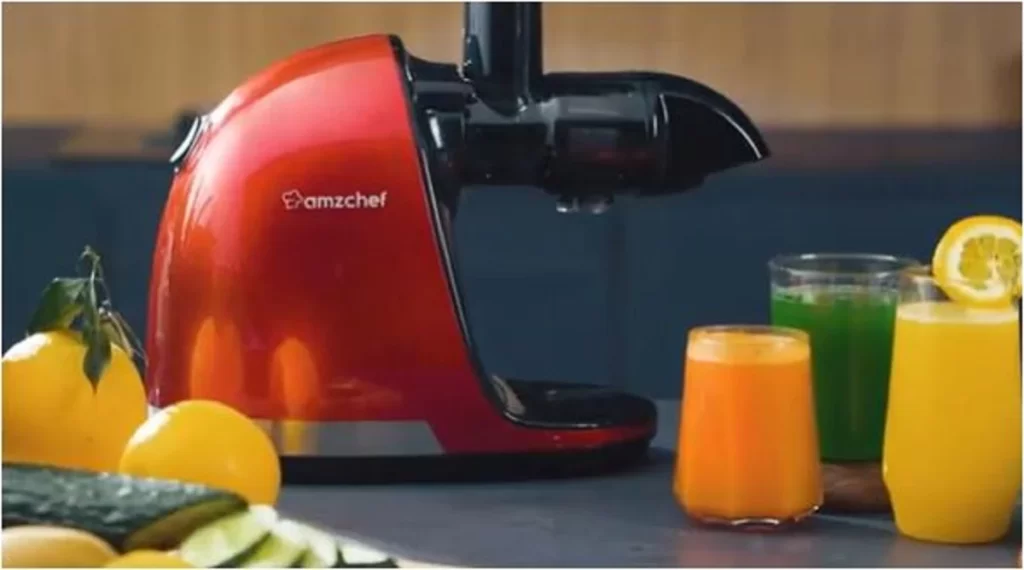
Slow Juicer vs Cold Press: The Choosing Factors
The choice between a slow juicer and a cold press juicer revolves around several key considerations.
1. Nutrition: Slow juicers, also known as masticating juicers, ensure minimal oxidation and heat generation. This retains more nutrients in the juice. Cold press juicers, by applying hydraulic pressure, also ensure minimal heat, maintaining the nutritional integrity of the juice.
2. Yield: Cold press juicers typically extract more juice from the produce, leaving behind very dry pulp. Slow juicers also offer a substantial yield, especially with leafy greens.
3. Noise Level: Slow juicers tend to operate more quietly compared to some cold press models, making them ideal for those who prefer a quieter kitchen ambiance.
Slow Juicer vs Cold Press: Proper Uses
Slow Juicers
Best for versatile juicing needs. They efficiently juice leafy greens, hard fruits, and even soft fruits. Some models can handle tasks like nut butter or pasta extrusion.
Cold Press Juicers
Ideal for those keen on achieving the highest juice yield. They shine with fruits and dense vegetables, delivering a dense and nutrient-rich juice.

Slow Juicer vs Cold Press: Recipes
In the world of juicing, the debate between slow juicers and cold press juicers has been ongoing for a while. While both machines have their own merits, their distinction becomes significant in the context of recipes.
1. Juice Texture and Taste
Slow juicers operate at lower speeds, resulting in minimal oxidation. This means that juices produced by slow juicers often retain more nutrients and have a smoother texture. On the other hand, cold press juicers extract juice through a hydraulic press method. The juices produced are typically more vibrant in color with a fresher taste. Depending on your taste preference, the juicer you choose can impact the flavor profile of your favorite recipes.
2. Nutrient Retention
If health benefits are your primary concern, the type of juicer can make a difference. Cold press juicers are known to retain the highest amount of nutrients. The pressing action ensures maximum extraction without producing heat, which can degrade certain vitamins. Slow juicers also do an excellent job of preserving nutrients but might lag slightly behind cold press machines in certain instances.
3. Ingredient Versatility
Considering the range of ingredients you want to juice can also guide your choice. Slow juicers are versatile and can handle leafy greens, soft fruits, and even nuts for making almond milk. Cold press juicers excel with almost any produce but can sometimes struggle with very soft fruits which turn more into a puree than juice.
4. Yield Quantity
For those wanting to get the most juice out of their produce, this factor can be pivotal. Cold press juicers generally have a higher yield due to their pressing mechanism, giving you more juice per piece of fruit or vegetable. Slow juicers might produce slightly less juice in comparison.
Slow Juicer vs Cold Press: Maintenance Tips
Maintaining your juicer can extend its lifespan and ensure the best juice quality.
Slow Juicers: It’s advisable to clean these immediately after use to prevent pulp residue from drying. Using a soft brush can help remove fine particles from the mesh.
Cold Press Juicers: Similar to slow juicers, immediate cleaning aids in easier pulp removal. Ensure that the pressing plates or bags are cleaned thoroughly to avoid mold or fermentation.
Slow Juicer vs Cold Press: Disadvantages
Slow Juicers
These machines tend to have a longer processing time due to their slow grinding mechanism. Some users might find this time-consuming, especially for larger batches.
Cold Press Juicers
Often, these are bulkier and might take up more counter space. The initial cost can also be higher compared to other juicing methods.
Read More:
